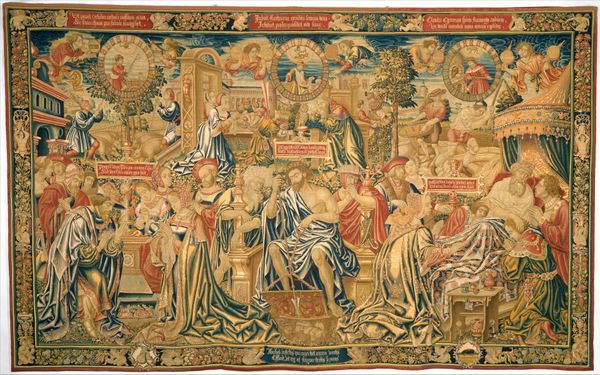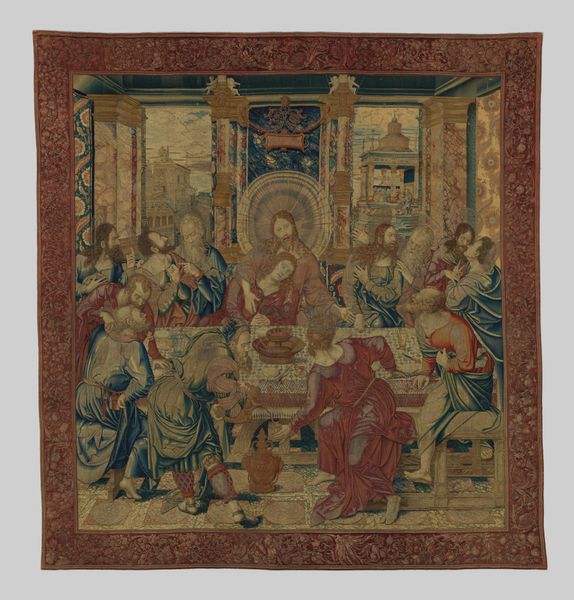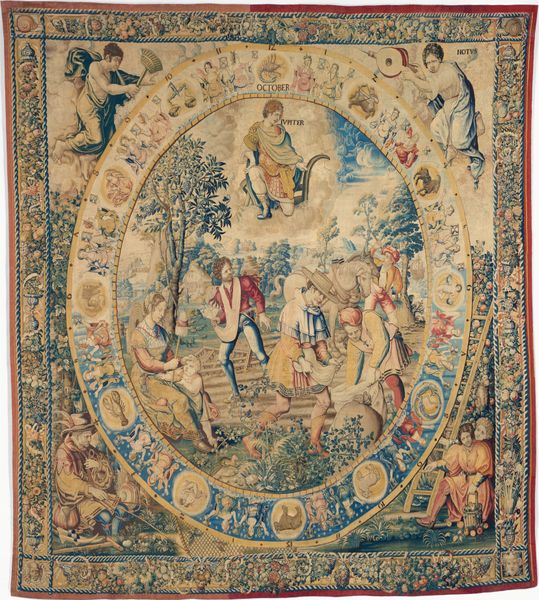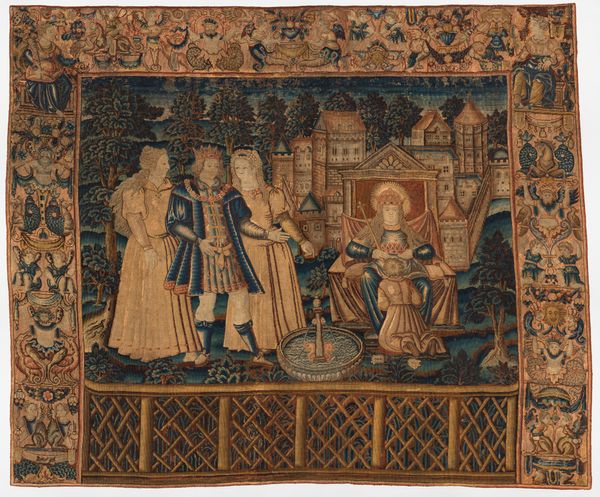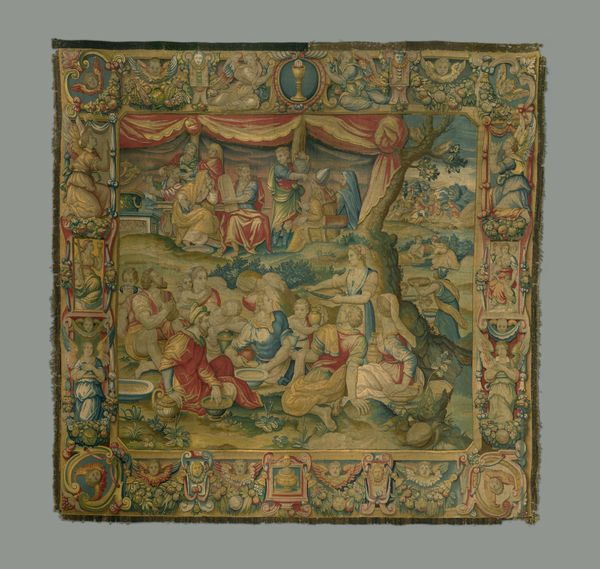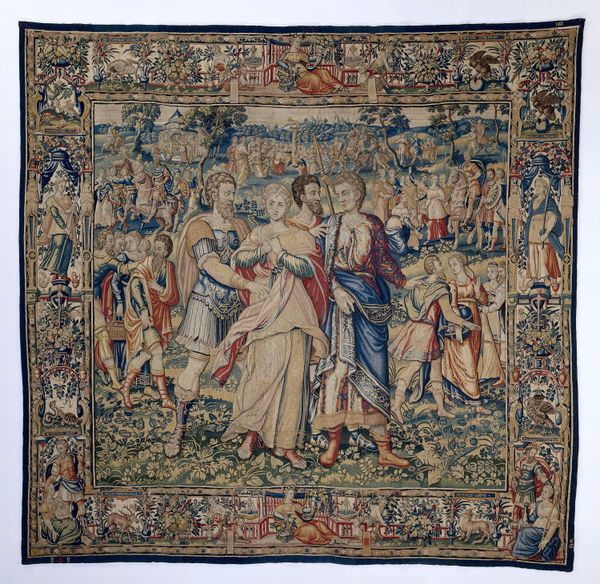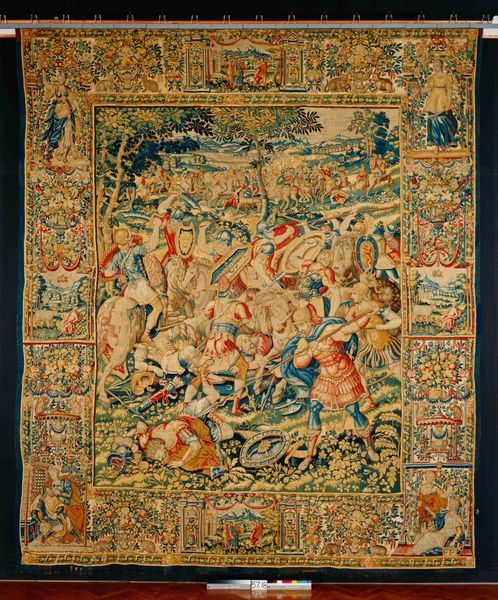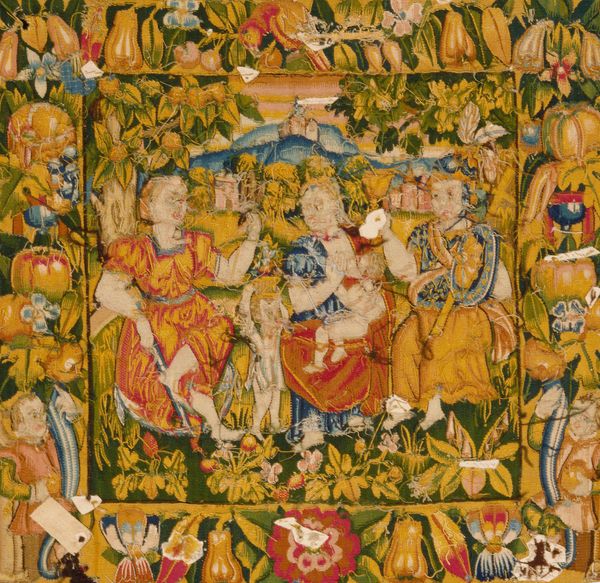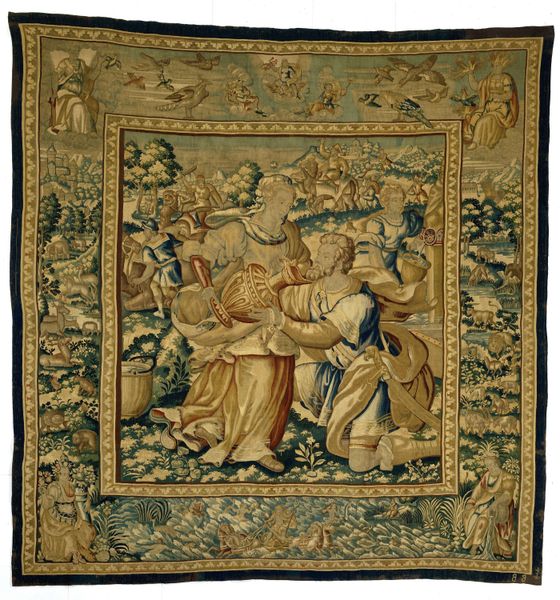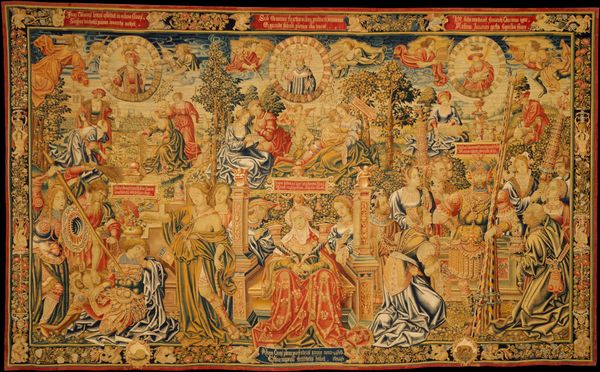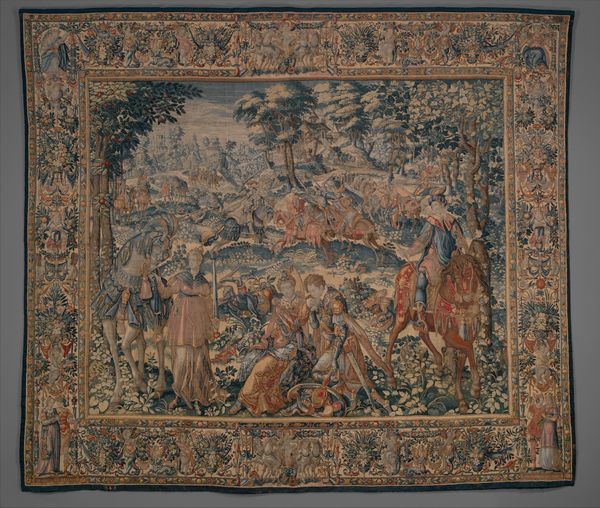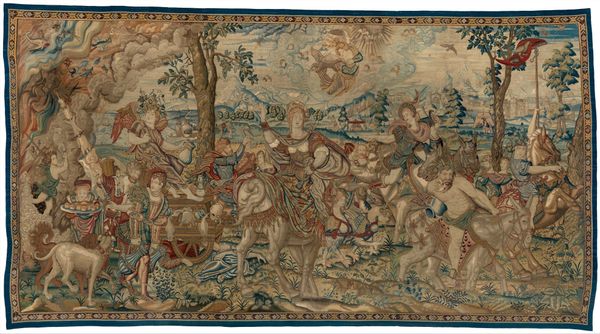
#
medieval
#
narrative-art
#
figuration
#
oil painting
#
history-painting
Dimensions: height 299.0 cm, width 311.0 cm
Copyright: Rijks Museum: Open Domain
Curator: This impressive tapestry, dating from around 1511, is titled "De voetwassing", or "The Washing of the Feet", attributed to Pieter van Edingen. Editor: It strikes me immediately as both intimate and grand in scale. The muted colors, the density of figures—it feels simultaneously like a private ritual and a momentous historical event. Curator: Precisely. Observe how the composition divides the space. The lower register presents the intimate act of foot-washing, bathed in a warmer light. Christ's kneeling posture creates a focal point that visually connects the mortal world to the upper zone above, where throngs of armed soldiers prepare for a fight. Editor: Let’s not forget the craftsmanship. Tapestries of this period required tremendous labor. The weavers, artisans in their own right, were interpreting paintings, turning images from paint into threads with tangible materiality, creating an artifact for consumption and contemplation. Curator: Indeed. Consider, for instance, the complex symbolism in their weaving. Water as purity, the act of cleansing as humility…these threads not only construct an image but weave a narrative imbued with layers of meaning and references that extend beyond simple representation. Editor: The division in color palettes mirrors this division as well, one of war and another of subservient care. Also, you’ve got to appreciate the actual physical demands of tapestry work. Think about the conditions, the skill… it makes me want to reach out and just feel the surface. Curator: That tactility, of course, is inherent. However, from a formalist perspective, the dense composition can be read as an attempt to unify disparate visual elements—to resolve a narrative tension through an intricate tapestry of figures and space. The medium reinforces the theme. Editor: Yes, while form shapes content, what fascinates me is how social status could be impacted by works such as these. This object speaks volumes about consumption habits within an economic and cultural hierarchy. Curator: I find myself drawn back to the central figure, Christ. His posture, his expression. How the interplay of light and shadow shapes an intensely human moment within a larger, more tumultuous backdrop. Editor: A powerful intersection of the micro and macro. I keep coming back to the process – the hours, the hands, that wove this scene. It offers a tangible link to the past.
Comments
No comments
Be the first to comment and join the conversation on the ultimate creative platform.
